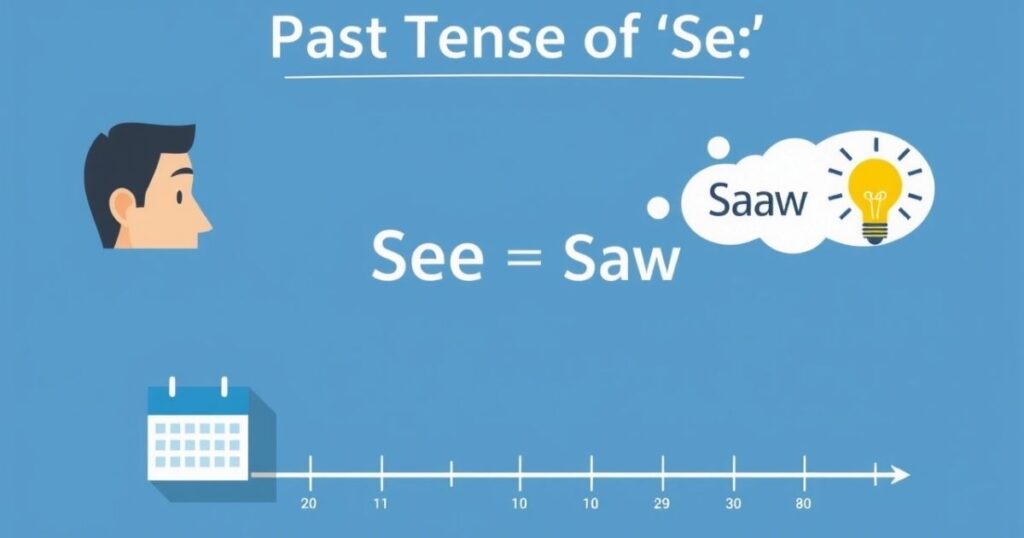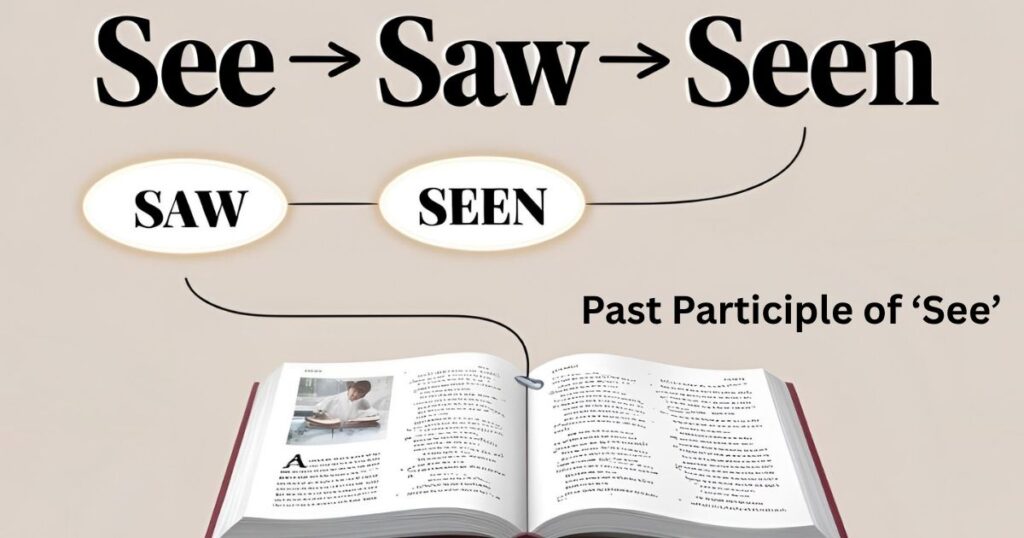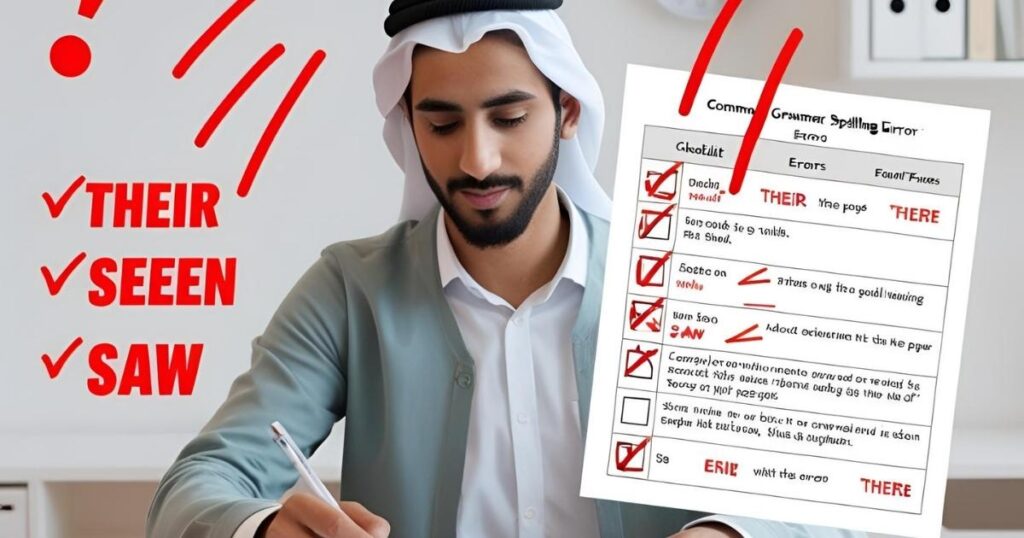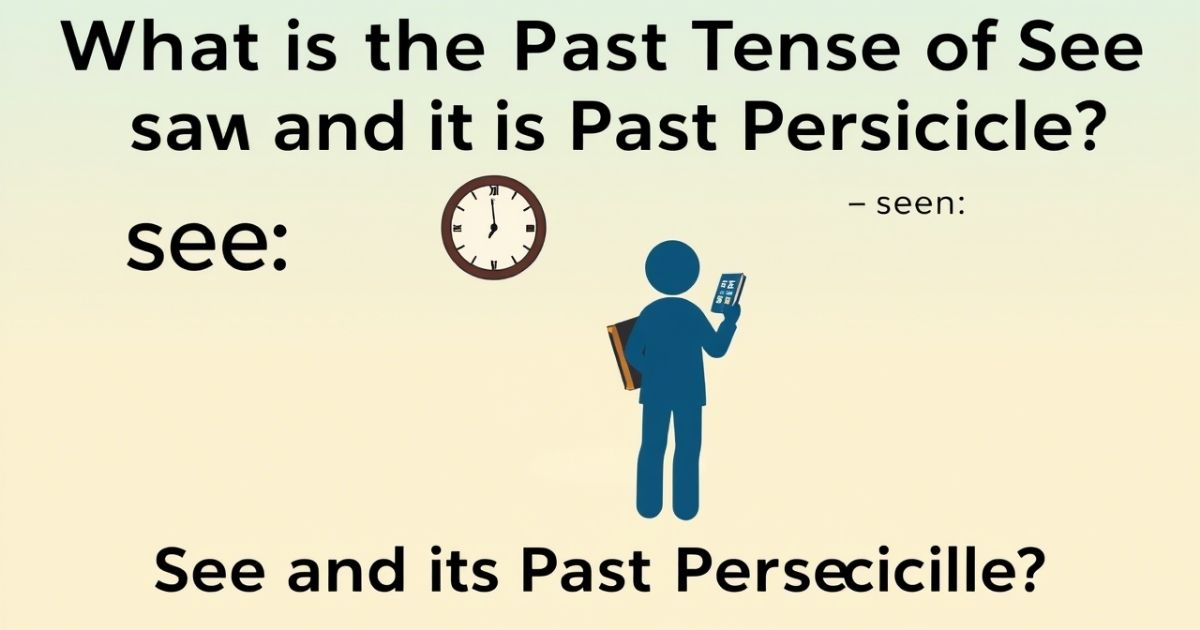English verbs often change when we talk about actions in the past. One common verb that causes confusion is “see.” Many learners ask, “What is the Past Tense of See and its Past Participle?” Understanding how this word changes can improve your grammar, especially in casual talk, school, or formal writing. We use different forms of “see” depending on when the action happens.
If you’ve ever said something like “I saw a movie yesterday,” you’re not alone. It’s a common mistake. That’s why it’s so important to know what is the Past Tense of See and its Past Participle? With the right knowledge, you can write and speak more clearly. In this article, we’ll break down what is the Past Tense of See and its Past Participle? in a simple and easy way.
Past Tense of ‘See’

The past tense of the verb “see” is “saw.” This is one of the most common irregular verbs in the English language. When we talk about something that happened in the past, we use “saw” to describe the action. For example, “I saw a movie yesterday.” The word “saw” tells us that the action of seeing happened in the past. We don’t add “ed” to irregular verbs like we do with regular verbs. Instead, they change completely, as with “see” changing to “saw.”
The importance of using “saw” correctly lies in its role in storytelling and communicating past events. Whether you are talking about a moment in the past or recalling an event that took place yesterday, “saw” is the word to use. For example, “She saw a cat in the garden yesterday.” This usage makes it clear that the action took place before now. In casual conversations, this simple change from “see” to “saw” helps the listener understand the time of the action clearly.
Read this Also: What’s the Past Tense of Troubleshooting?
How It Changes:
The change from “see” to “saw” is an example of an irregular verb. Regular verbs usually added” in the past tense, such as”walk “” becoming “”walked ” or”jump ” becoming”jumped.” But for irregular verbs like “see,” the past tense form is completely different. In this case, “see” changes to “saw,” and it’s essential to remember this shift to communicate correctly.
Using “saw” is simple once you understand how it works. Think of it like this: when you are telling a story about something that already happened, you need the past tense form. “I saw a rainbow this morning” makes it clear that the action occurred in the past. Without “saw,” the sentence would sound strange or incomplete. English learners often find these changes tricky, but practicing with examples can help you get the hang of it.
Why it Matters:
Getting the past tense of “see” right is crucial for clear communication. When we talk about past events, using the wrong form can confuse the listener or reader. Imagine saying, “I saw the movie,” instead of “I saw the movie.” The first sentence sounds incorrect, and the listener might not understand what you’re trying to say. Using “saw” instead of “see” is one of the easiest ways to sound more natural and accurate when speaking or writing in English.
Moreover, using the correct past tense also helps you sound more fluent in English. Whether you’re writing an academic paper, telling a story, or having a casual conversation, knowing when to use “saw” makes your grammar stronger. This attention to detail improves your language skills and helps you communicate more effectively.
Past Participle of ‘See’

The past participle of “see” is “seen.” This form is used differently from the past tense. We use the past participle with auxiliary verbs like “have,” “has,” or “had” to talk about actions that happened in the past and are connected to the present. For example, “I have seen that movie before.” In this sentence, “have seen” tells us that the action of seeing happened at some point in the past, but it’s still relevant now.
The past participle “seen” is also important in more complex tenses, like the present perfect or past perfect. For instance, “They had seen the same movie before.” Here, “had seen” describes an action that took place before another action in the past. Using the past participle form helps you communicate more precisely about when something happened and how it relates to the present.
How It Changes:
Just like “see” changes to “saw” in the past tense, the verb also changes to “seen” in the past participle. When you use the past participle, you are indicating an action that may have happened in the past but still has relevance to the present moment. This is a key distinction because, unlike the past tense, the past participle doesn’t simply point to something that’s over; it connects the past action with the present or another past event.
Take the sentence “I have seen that movie already.” Here, “have seen” connects the past action of watching the movie with the present moment. It means that at some point in the past, the action occurred, and it’s still relevant now. In comparison, if you just say, “I saw that movie yesterday,” you are simply telling the listener when the action happened, with no connection to the present. Both forms are important, but knowing how they change and how to use them correctly will help improve your grammar.
Why it Matters:
Understanding when to use “seen” is vital because it impacts how you express time and relevance in English. Without the correct use of past participles, your sentences might sound incomplete or unclear. For example, “I have seen the rainbow” implies that seeing the rainbow is still important or relevant now. But if you said “I saw the rainbow,” it just tells the listener that it happened in the past.
Using “seen” correctly adds depth to your communication. It shows that the action is connected to the present or to another past event, which is often the case in academic or research writing. Being able to use past participles properly helps you sound more natural in both spoken and written English, especially when discussing experiences or events that have an ongoing impact or relevance.
Common Mistakes to Avoid

One of the most common mistakes with the past tense and past participle of “see” is mixing up “saw” and “seen.” For example, many English learners might say, “I saw the cat yesterday,” instead of “I saw the cat yesterday.” This error makes the sentence sound incorrect and can confuse the listener or reader. Remember, “saw” is used for past actions that happened at a specific time, while “seen” is used with helping verbs like “have” or “had.”
Another mistake people make is using “see” when they should use “saw” or “seen.” It’s important to remember the rules: use “saw” for a simple past action, and use “seen” with auxiliary verbs in perfect tenses. If you mix these up, your sentences might sound awkward or unclear. Practice and understanding the rules will help you avoid these mistakes.
Don’t Mix Up Words:
It’s crucial not to mix up “see,” “saw,” and “seen.” These three forms serve different purposes. “See” is the present tense, “saw” is the simple past, and “seen” is the past participle. Using the wrong one can make your sentence grammatically incorrect and confusing. For example, “I have seen the movie” is wrong. The correct sentence would be “I have seen the movie.”
To make sure you use these words correctly, always check the tense of your sentence. Are you talking about something that happened in the past? Then use “saw.” Are you connecting a past action with the present? Use “seen” with a helping verb like “have” or “had.”
Keep Tenses Right:

When speaking or writing, it’s essential to keep tenses consistent. Mixing up the tenses of “see” can lead to confusion. For instance, “I saw a cat yesterday, and I have seen it before” sounds odd. The correct sentence would be: “I saw a cat yesterday, and I have seen it before.” This shows that you are keeping the past action (“saw”) and the present connection (“have seen”) clear and consistent.
By keeping tenses right, you make sure your communication is smooth and understandable. It shows that you can properly express when something happened and how it relates to other events, whether in the past or present.
Conclusion
Now you understand what is the past tense of see and its past participle. The past tense is saw. The past participle is seen. These two words have different uses. We use saws for past events. We use seen with helping verbs like have or had. Learning what is the past tense of see and its past participle helps you speak better English.
If you know what is the past tense of see and its past participle, your writing will also improve. It helps in school, work, and everyday talk. Many people make mistakes with these words. With practice, you won’t. Always ask yourself, “What is the past tense of see and its past participle?” This question will guide you. Remember the rules, and you’ll get it right every time.

Gramcoachpro is your go-to platform for mastering grammar, writing, and communication skills. If you’re a student, teacher, or content creator, we provide easy-to-understand tips, examples, and tools to improve your language — fast and effectively. Our mission is to make better writing simple and accessible for everyone.

